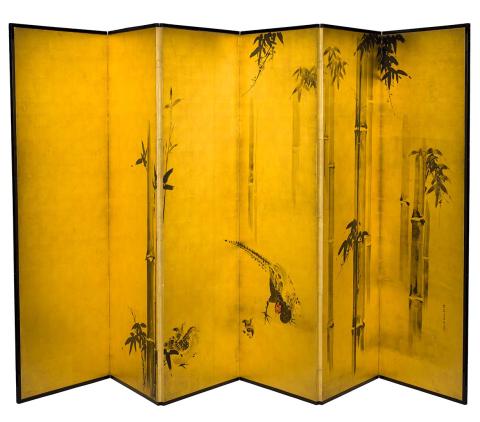LABEL: 2013.143a-b MORIMICHI
By Ineke Dane Geraldine Kirrihi Barlow
February 2024
Founded by Kanō Masanobu (1434–1530CE), the Kanō school remains the longest-lasting and most important movement in Japanese painting. Largely due to the immense patronage of the Tokugawa shogunate during the Edo period (1603–1867), the school dominated production and aesthetic tastes for over 300 years. Employing a combination of Chinese literati painting and a bold new version of a Japanese tradition, known as yamato-e, artists of the Kanō school often painted in ink on gold leaf and began depicting elements of nature on a large scale, suited to sliding doors and six-panel screens that adorned the palaces, temples and houses of wealthy patrons.
The Kanō school maintained four leading branches and was determined by family lineage, into which many artists married or were adopted. Dictated by familial line, Kanō Tanshin Morimichi was the eldest son of a Kajibashi-branch head and a direct descendent of the branch’s founder, the acclaimed artist Kanō Tan’yū. Tan’yū named the branch after the district in which he lived after moving from Kyoto to Edo (now Tokyo) around 1614 with his brother, Kanō Yasunobu. Many established artists relocated to the new capital to follow their principal patrons, the shogunate.
Connected objects
Metadata, copyright and sharing information
About this story
- Subject
